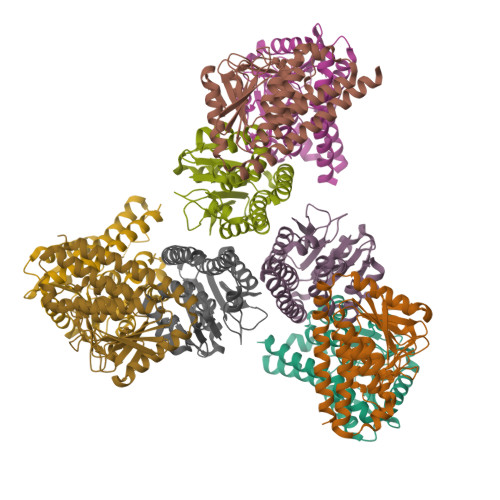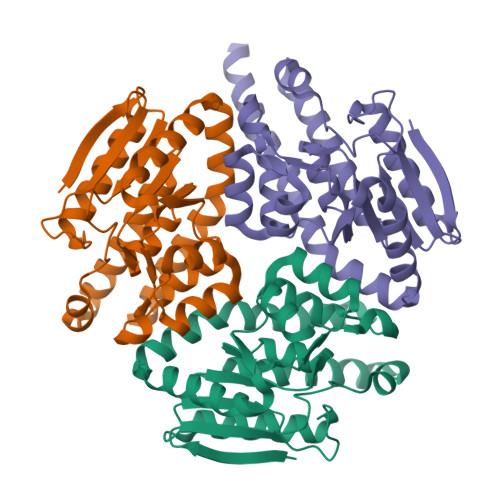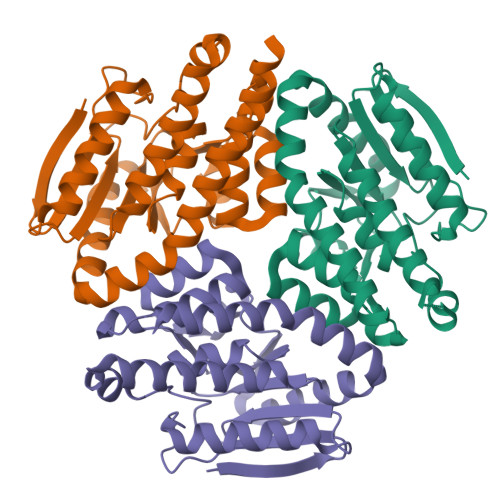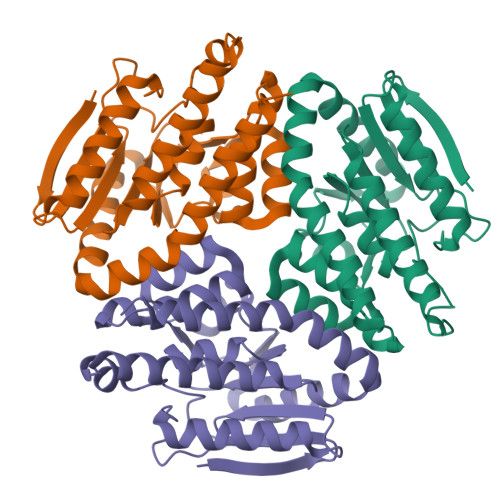Structural and Mechanistic Studies on Carboxymethylproline Synthase (CarB), a Unique Member of the Crotonase Superfamily Catalyzing the First Step in Carbapenem Biosynthesis.
Sleeman, M.C., Sorensen, J.L., Batchelar, E.T., McDonough, M.A., Schofield, C.J.(2005) J Biological Chem 280: 34956-34965
- PubMed: 16096274
- DOI: https://doi.org/10.1074/jbc.M507196200
- Primary Citation of Related Structures:
2A7K, 2A81 - PubMed Abstract:
The first step in the biosynthesis of the medicinally important carbapenem family of beta-lactam antibiotics is catalyzed by carboxymethylproline synthase (CarB), a unique member of the crotonase superfamily. CarB catalyzes formation of (2S,5S)-carboxymethylproline [(2S,5S)-t-CMP] from malonyl-CoA and l-glutamate semialdehyde. In addition to using a cosubstrate, CarB catalyzes C-C and C-N bond formation processes as well as an acyl-coenzyme A hydrolysis reaction. We describe the crystal structure of CarB in the presence and absence of acetyl-CoA at 2.24 A and 3.15 A resolution, respectively. The structures reveal that CarB contains a conserved oxy-anion hole probably required for decarboxylation of malonyl-CoA and stabilization of the resultant enolate. Comparison of the structures reveals that conformational changes (involving His(229)) in the cavity predicted to bind l-glutamate semialdehyde occur on (co)substrate binding. Mechanisms for the formation of the carboxymethylproline ring are discussed in the light of the structures and the accompanying studies using isotopically labeled substrates; cyclization via 1,4-addition is consistent with the observed labeling results (providing that hydrogen exchange at the C-6 position of carboxymethylproline does not occur). The side chain of Glu(131) appears to be positioned to be involved in hydrolysis of the carboxymethylproline-CoA ester intermediate. Labeling experiments ruled out the possibility that hydrolysis proceeds via an anhydride in which water attacks a carbonyl derived from Glu(131), as proposed for 3-hydroxyisobutyryl-CoA hydrolase. The structural work will aid in mutagenesis studies directed at altering the selectivity of CarB to provide intermediates for the production of clinically useful carbapenems.
Organizational Affiliation:
Department of Chemistry, Chemistry Research Laboratory, University of Oxford, Mansfield Road, Oxford OX1 3TA, United Kingdom.


















